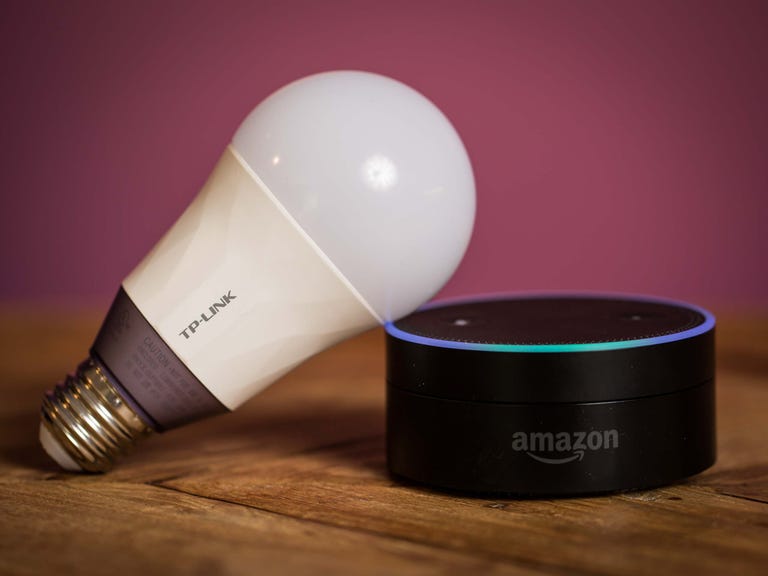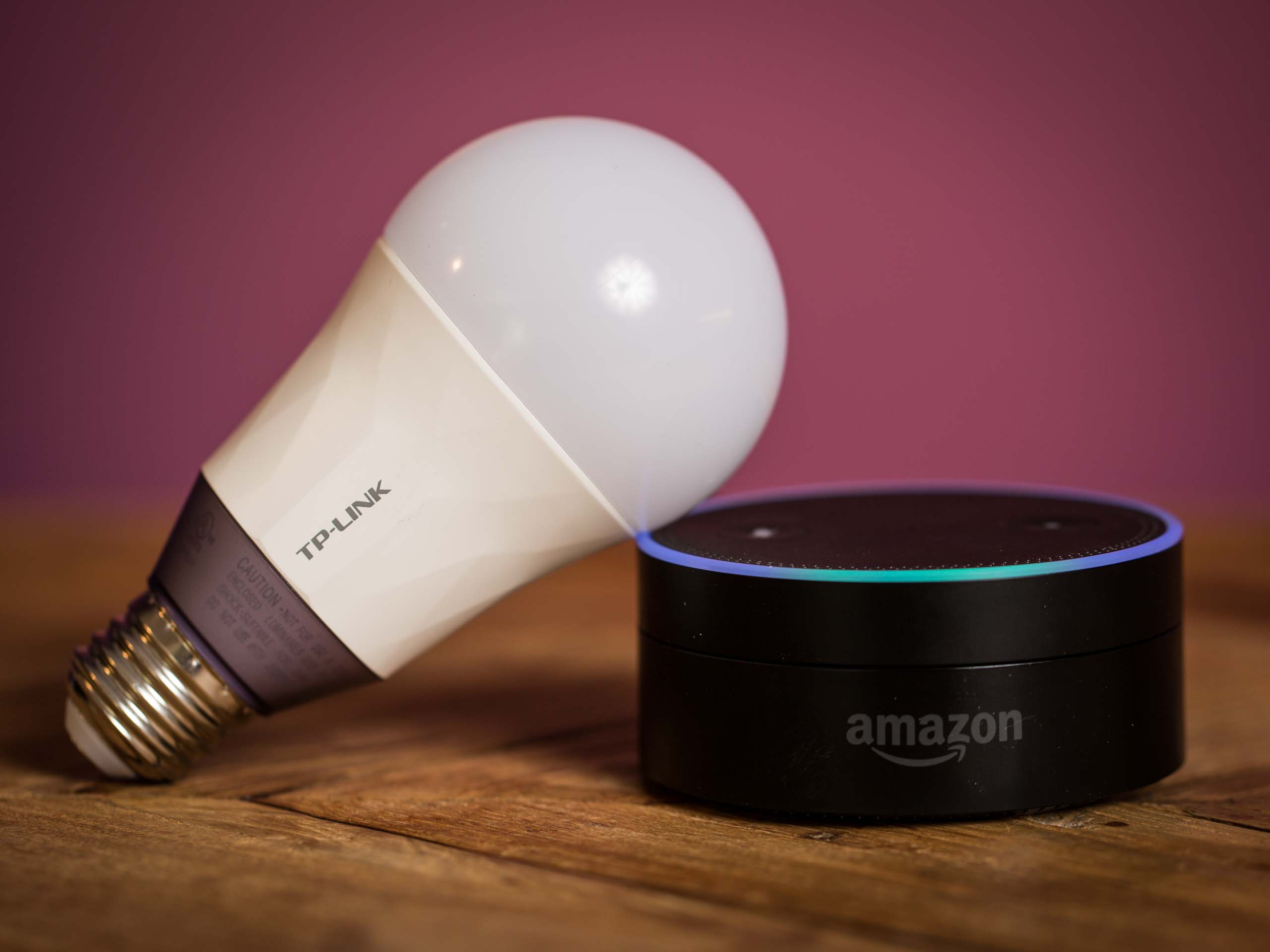 Why You Can Trust CNET
Why You Can Trust CNET TP-Link LB130 Multicolor Wi-Fi LED review: Too many compromises with this color-changing smart bulb
It's cheaper than Lifx or Philips Hue, but this Alexa-ready multicolor smart bulb from TP-Link left us unimpressed.
There's a growing list of lights that you can control by talking to Amazon's Alexa, the virtual AI assistant housed within the Amazon Echo and Echo Dot smart speakers. Among them are a couple of devices from TP-Link, which has emerged as a decent budget option for Alexa-compatible gadgets.
The Good
The Bad
The Bottom Line
Those options include the TP-Link LB130, a color-changing Wi-Fi bulb that costs $50. It's less of a bargain than TP-Link's smart plugs and non-color-changing smart bulbs, but it's still priced 10 bucks below what you'd spend on the comparable Lifx LED, a color-changing Wi-Fi bulb that also works with Alexa.
Like Lifx, the TP-Link LB130 is a bright, efficient bulb that offers full color and color temperature control through a companion app for Android and iOS devices. And, also like Lifx, you don't need a hub because it uses its own built-in Wi-Fi radio to connect directly with your home's router.
But the LB130 is not as well-featured or well-connected to third parties as Lifx and Philips Hue are. And, unlike Lifx, which offers its own custom Alexa skill, you can't ask Alexa to change the LB130's color, nor can you trigger color changes using outside services like IFTTT. There are just a few too many compromises here for me to recommend it over Lifx or Hue, even if it costs a little less.
Screw in, turn on, sync up
The nice thing about smart bulbs like the LB130 that use Wi-Fi as opposed to something like ZigBee is that you don't need to plug any sort of hub into your router in order to translate their signal. You just screw the thing in, turn it on, and pair with it in TP-Link's "Kasa" app.
Getting the TP-Link LED up and running with Alexa is a cinch.
To do so, you'll follow the app's instructions and connect with the Wi-Fi signal that the bulb puts out when you first turn it on. Then, you'll jump back into the app, where TP-Link will tether the bulb back to your home network. From there, you'll be able to turn the bulb on and off, dim it up and down, or change its color and color temperature using the app's controls.
If you want to pair it up with Alexa, just open the smart home section of the Alexa app, tap "Get More Smart Home Skills" and search for the Kasa skill. When you enable it, it'll ask you to provide your login info -- once you do, you'll be able to ask Alexa to scan for the bulb and add it to the list of devices she can control.
From there, Alexa can turn the bulb on and off or dim it up and down. You can also group it with other Alexa-compatible lights to control everything at once.
You can't, however, ask Alexa to change the color. For that, you'll need to use the app, which is a significant disappointment. After all, you aren't buying this bulb if color control isn't at least somewhat important to you, not when the non-color-changing version costs 30 bucks less. And it's not like Alexa-enabled color changes are impossible -- Lifx made it happen using a custom Alexa skill that lets her switch to any shade you like, provided you tack "tell Lifx" onto the start of your command.
You'll select the bulb's color or color temperature using these spectra.
Superficial features
So, the TP-Link LB130 is an Alexa-compatible color-changing bulb that won't let Alexa change the colors -- and that's not the only instance where the features come up short.
In addition to brightness and color controls, the app features an energy usage tracker, a "Circadian Mode," and a scheduling tool.
On paper, there's plenty of utility packed into that app, with scheduling, energy tracking, and even a "Circadian Mode" that'll automatically adjust the bulb's brightness and color temperature throughout the day. But it feels like TP-Link was more concerned with checking features off of a list than with actually executing them well.
Let's start with the scheduling tool. It works well enough, letting you program the bulb to turn on or off or change colors at specific times of day, but there's no option for selecting a custom fade duration like you'll get with Lifx. That might sound like a little thing, but slow fades are the key to simulating a sunrise to wake you up in the morning, or creating subtle visual reminders that a deadline is drawing near. You can't do anything like that with this bulb.
On the energy tracking front, the app will let you keep tabs on how much you're using each bulb on a per-day average, along with the average energy savings over a standard 60W incandescent. I suppose that's all well and good, but I'd have preferred a more graphical interface here instead of just a bunch of numbers. At the very least, the app could have translated the kilowatt-hours (kWh) saved into actual dollars and cents. It didn't do any of that, though. As a result, the feature feels arbitrary and tacked-on.
As for the Circadian Mode, it's a very simple way to automate the bulb to switch between hot, bluish-white daylight tones during the day and warmer, more candle-like yellows in the evening. There's no way to customize it, though, and that's a problem since the whole point of circadian lighting is to help you sleep better at night and feel more energized during the day. At a minimum, you really ought to be able to tell the bulb when you typically wake up and go to bed to better tailor those automated changes to your normal routine.
Most damning of all is the bulb's lack of connections outside of Alexa. There's no IFTTT channel, no compatibility with Apple HomeKit or Google Home, and no direct support for third-party controllers like SmartThings or Wink. Without those kinds of integrations, it's a lot tougher to put those colors to good use in your home.
In terms of brightness, the TP-Link LED (colored bars) competes quite well with Lifx (light gray) and Philips Hue (dark gray).
Strong specs
Though bright, the LB130's green setting was a little yellowy for my tastes.
Underwhelming features aside, the LB130 did impress me when I tested it in our lighting lab. The bulb calls itself a 60W replacement and claims a maximum brightness of 800 lumens, but it scored significantly higher, with the default setting clocking in at 896 lumens at full brightness.
The colors came in nice and bright, too, besting Philips Hue's newest bulbs at almost every turn and even keeping up with the category-leading Lifx LED. Color accuracy was strong for the most part, too, though the green and cyan tones weren't as richly saturated as I'd have liked.
In terms of efficiency, the bulb draws 11 watts at peak brightness, which makes it good for a little more than 80 lumens per watt. That's a better-than-average result, and perhaps a means of justifying the bulb's expense. Use it to replace a standard 60W incandescent and you'll knock about $6 per year off of your energy bill, assuming you're running it at full brightness for an average of three hours per day. Those energy savings will cover the cost of the bulb outright after eight and a half years, which is less than half of the bulb's stated lifespan.
Worth it?
Nah. At $50, the TP-Link LB130 doesn't do anything to change the fact that color-changing smart bulbs are still annoyingly expensive. And though it costs $10 less than the comparable third-gen Lifx LED, it comes with too many compromises to earn my recommendation. If I'm splurging, I'd rather spend the extra $10 and get better features, better Alexa controls and a better slate of smart home partners.



